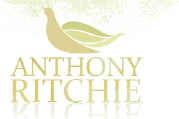

Ururangi and Waipunarangi
music by Anthony Ritchie, for SSAATTBB choir a cappella, Opus 225 (2024)
Part of the choral cycle Matariki He Kāhui Reo for premiere at the 13th World Choir Games, Auckland
- Duration: 4 minutes each
- Commissioned by: Chor 2024
- Text s by Ataahua Papa
- Level: 3 | Professional and semi-professional musicians
These two waiata were composed as part of the collaborative work Matariki He Kāhui Reo for premiere at the 13th World Choir Games, Auckland, July 15, 2024. The work was commissioned by Chor 2024. In Te Ao Māori, Ururangi and Waipunarangi are two of the stars from the Matariki constellation; Ururangi is traditionally associated with the wind, while Waipunarangi is associated with rain.
Ururangi begins as a general evocation of the wind and Tāwhirimātea, the god of the wind. In the second half a gentle northerly wind brings sad memories of loss and loneliness in a setting of the text E Pā tō hau by Rangiamoa. The story behind this text is best related by reference to the Te Ara website: E pā tō hau, a very famous waiata tangi, or lament, was probably written by Rangiamoa of Ngāti Apakura, one of the tribes of Waikato. Ngāti Apakura used to live at Rangiaowhia, an undefended settlement near Te Awamutu. The tribe did not take part in the Waikato war, but Rangiaowhia was attacked by British troops, and after the 1864 battle of Ōrākau its occupants were forced from their homes. Later their lands were confiscated. A section of Ngāti Apakura travelled towards Taupō. Rangiamoa's cousin Te Wano paused to gaze upon his former home from the promontory of Titiraupenga. He died there and was buried in a cave. In lamenting the death of her cousin, Rangiamoa was mourning the fate of all her people. Listen to E pā tō hau .